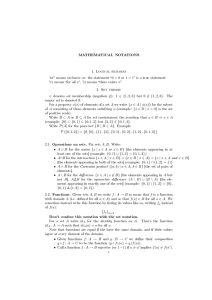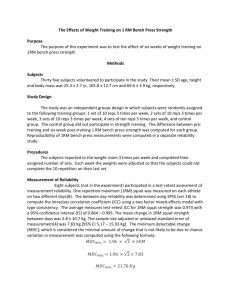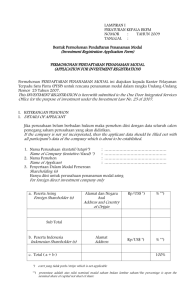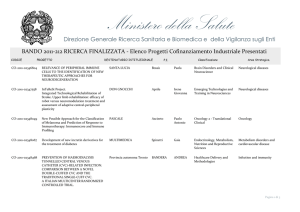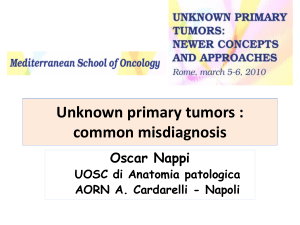Improving Outcomes Through the Use of Inpatient Order Sets: A S t
advertisement
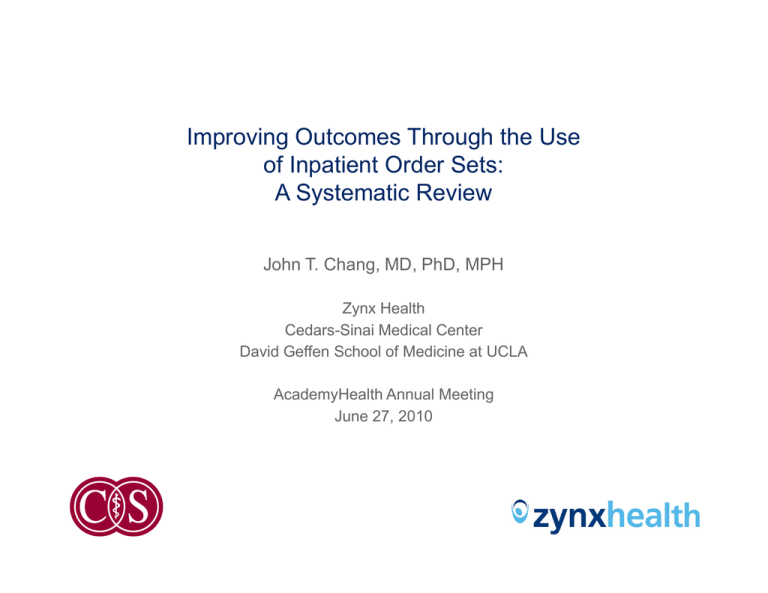
Improving Outcomes Through the Use of Inpatient Order Sets: A Systematic S t ti Review R i J h T John T. Ch Chang, MD MD, PhD PhD, MPH Zynx Health Cedars-Sinai Cedars Sinai Medical Center David Geffen School of Medicine at UCLA AcademyHealth Annual Meeting June 27, 2010 Acknowledgements Project Team Alison Dietrich Dietrich, MD Michael L. Langberg, MD Paul A. Silka, MD Funding Cedars-Sinai Medical Center Disclosures Drs. Chang and Dietrich are employees of Zynx Health Drs. Langberg and Silka are employees of Cedars-Sinai Medical Center The views expressed in this presentation are those of the investigators and do not necessarily represent the views of Zynx Health or Cedars-Sinai Medical Center Center. © 2010 Zynx Health Incorporated 2 Background Use of evidence-based order sets and computerized provider order entry (CPOE) – Increasing attention to evidence-based clinical decision support – Identified by Health IT Policy Committee, a Federal Advisory Committee to the National Coordinator for Health IT, as early objective for meaningful use of electronic health record systems y Mayy help p drive improvements p in q quality, y, safety, y, and efficiency y of p patient care Little is known about the effects of evidence-based order sets on clinical outcomes © 2010 Zynx Health Incorporated 3 “Does the use of evidencebased order sets improve clinical outcomes? outcomes?” © 2010 Zynx Health Incorporated 44 Order Sets A compilation of medications, nursing items, labs, diagnostic tests, radiology tests, consults, etc., that might be selected by a clinician for the care of a patient being seen for a specific condition or procedure in a specific venue of care (e.g., admission to coronary care unit for acute myocardial infarction) Evidence-based versus expert-based Paper-based versus electronic forms–based versus computerized physician order entry (CPOE) © 2010 Zynx Health Incorporated 5 Methods MEDLINE Search – – 1999-2009 999 009 “order set” and “physician” Hand-searching included article reference lists Inclusion criteria – – Exclusion criteria – English language Focus on evaluating the use of order sets by physicians in inpatient settings Newsletter-type articles Study selection and abstraction with two investigators – Di Disagreements t resolved l db by consensus © 2010 Zynx Health Incorporated 6 Results © 2010 Zynx Health Incorporated 7 Results Clinical Outcomes – Settings 3 Adult Medicine 4 9 Pediatrics Emergency Medicine © 2010 Zynx Health Incorporated 8 Emergency Department Septic shock (Micek et al) – Congestive heart failure [CHF] (Reingold and Kulstad) – Decreased mortality mortality, decreased length of stay [LOS] Improved angiotensin converting enzyme inhibitor and IV nitroglycerin use Acute coronary syndrome [ACS] guideline adherence for the use of beta-blockers (Asaro et al) – No change Micek et al, Crit Care Med 2006 November;34(11):2707-13. Reingold and Kulstad, Acad Emerg Med 2007 November;14(11):1097-105. Asaro et al, AMIA Annu Symp Proc 2005;6-10. © 2010 Zynx Health Incorporated 9 Inpatient Pediatrics Asthma (Chisolm et al) – Improved corticosteroid use use, pulse oximetry Procedural sedation (Broussard et al) – Decreased medication errors – Increased use of appropriate reversal agents Peripherally inserted central venous catheters (Migita et al) – Improved provider satisfaction Medication errors (Walsh et al) – Physician misuse 4 errors per 1,000 patient days Chisolm et al, Pediatr Allergy Immunol 2006 May;17(3):199-206. Broussard et al, J Pediatr 2009 June;154(6):865-8. Migita et al, Pediatrics 2009 April;123(4):1155-61. Walsh et al, Pediatrics 2006 November;118(5):1872-9. November;118(5):1872 9. © 2010 Zynx Health Incorporated 10 Inpatient Adults Acute myocardial infarction [AMI] (Eagle et al) – ACS (Ozdas et al) – Increased ASA use AMI (Santolin (S t li and d Boyer) B ) – Reduced 30 30-day day and 1 1-year year mortality More appropriate medication use Pneumonia (Fleming et al) – – Reduced in-hospital and 30-day mortality $1,278 per life saved Eagle et al, J AM Coll Cardiol 2005 October 4;46(7):1242-8. Ozdas et al, J Am Med Inform Assoc 2006 March;13(2):188-96 Santolin and Boyer, Crit Pathw Cardiol 2004 June;3(2):79-82 Fleming et al, Jt Comm J Qual Patient Saf 2009 August;35(8):414 August;35(8):414-21. 21. © 2010 Zynx Health Incorporated 11 Inpatient Adults Bacteremic sepsis (Thiel et al) – Diabetes (Noschese et al) – – Improved glucose control Decreased LOS VTE prophylaxis (O’Connor (O Connor et al) – Decreased orders for corrective-dose insulin Diabetes (Schnipper et al) – Decreased LOS, in-hospital in hospital mortality, renal failure Increased orders for DVT prophylaxis Immunizations (Heffner et al) – Improved p o ed compliance co p a ce with t inpatient pat e t pneumococcal p eu ococca a and d influenza ue a immunization recommendations Thiel et al, Crit Care Med 2009 March;37(3):819-24. Noschese et al, Qual Saf Health Care 2008 December;17(6):464-8. Schnipper et al, J Hosp Med 2009 January;4(1):16-27. O’Connor O Connor et al, J Hosp Med 2009 February;4(2):81-9. February;4(2):81 9. Heffner et al, Jt Comm J Qual Saf 2004 July;30(7):366-76. © 2010 Zynx Health Incorporated 12 Improved Clinical Outcomes 100% 90% 1 80% 1 70% 60% 50% Neutral No Yes 9 40% 3 30% 2 20% 10% 0% Adult Medicine © 2010 Zynx Health Incorporated Pediatrics Emergency g y Medicine 13 Discussion Use of order sets improves clinical outcomes in the inpatient setting – – – – – Improved appropriate medication use (6) Mortality (4) Improved specific disease management (3) Length of stay (3) Cost-effectiveness (1) © 2010 Zynx Health Incorporated 14 Limitations Availability of original studies Heterogeneity of outcomes studied Heterogeneity of conditions studied © 2010 Zynx Health Incorporated 15 Implications Use of order sets may help drive improvements in quality Use of evidence-based order sets remains an important objective for meaningful use of electronic health record systems Future research: Expand understanding of effectiveness to identify specific areas where evidence-based order set usage can derive the greatest value – – – – More conditions More settings More types of outcomes (e.g., safety, financial, efficiency) Future pooled analyses Standardized generic outcome measures Standardi ed condition Standardized condition-specific specific o outcome tcome meas measures res © 2010 Zynx Health Incorporated 16 Th k you Thank JJohn h T. T Chang, Ch MD, MD PhD PhD, MPH Manager of Clinical Content, Zynx Health Assistant Clinical Professor of Medicine, UCLA j jchang@zynx.com g@ y 310.954.5683
